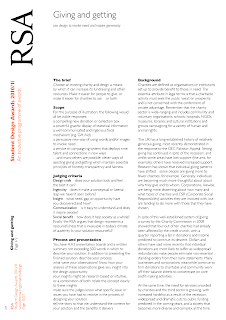Developing The Idea
The original idea for this was very basic, so this has plenty of room for development. This idea is creating a marketing campaign for Fairtrade, helping to raise awareness of the charity and increase the sale of produce. With this in mind, the campaign is to encourage people to get involved with Fairtrade and spark an interest in the products. The marketing campaign will revolve around a mobile application (app) so that it can be carried around and used without intruding the user’s life. An application developed is to encourage people to see what’s around them and make them and explore Faortrade, slowly introducing them to the products at their own pace rather than forcing it upon them. Through this exploration, the user can see how Fairtrade can fit into their lives and find new things they enjoy.
The use of QR codes is that each product is different from the other, there is a range of Fairtrade products all come from different places, so each product will have its own unique QR code on the packaging of a product. This code can be scanned by a smart phone with a QR scanner app and will be recognised by the app. The idea of the app is that the user go out and collect as many different product codes as possible for them, so that they are going out and exploring the Fairtrade world and seeing what is available to them. The app will be a series of jigsaws for the user to collect the pieces of. With each product there is a new piece for the jigsaw. The user collects each piece until the jigsaw is completed. Once it is complete, the user gets a new jigsaw piece for one final jigsaw. At the end of each puzzle, the user can enter a competition. As competitions have to come to an end, mini games will be provided where users can compete with other users to get high scores.
To help raise awareness, the user will receive a letter when they scan the QR code. The letter will be from a producer relating to the product and gives the user some insight to the lives these farmers have had, and how Fairtrade has helped to make a different. The letters will be personalized to the user, letting the user develop a bond with the producer and product when they get a letter. The letters can only be viewed once when the user collects the piece, but it won’t be forced onto them, they can choose not to read and carry on putting the jigsaw piece in the jigsaw. As most charities use some emotional pull to get peoples attention, this will be the job of the letters. As the letters will be insightful of the producers life, it will look at how they coped with out Fairtrade as the user needs to understand the need for Fairtrade. However, this will not be the main focus. As Fairtrade is a happier charity than others, the letters will look more to the benefit of Fairtrade and the effect this has on people around them.
Here is some sketches to show how it would work.
 |
| 1. The user uses a QR scanner to scan the code and retrieve the piece. |
 |
| 2. Once the user receives the piece they can view a letter by the producer. |
 |
| 3. The user can then place the piece in the jigsaw. |
 | ||
|
Heres a presentation I made in the last module to present my idea.
















